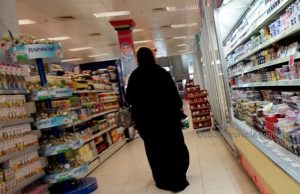 As the holy month of Ramadan approaches and preparations are underway, AMRB, a leading Dubai based regional market research firm reveals new emerging trends amongst consumers.
As the holy month of Ramadan approaches and preparations are underway, AMRB, a leading Dubai based regional market research firm reveals new emerging trends amongst consumers.
The AMRB Ramadan Connect study was conducted to get understanding, insights and a holistic perspective of the fascinating journey of housewives during Ramadan.
This study helps to understand, reach and provide insights into consumer’s food and beverage consumption patterns, cultural nuances, trends, changes, media habits etc during Ramadan.
Research also helped reach, understand and gain consumers during Ramadan. It further delves into:
- Significance of Ramadan for consumers
- Consumptions dynamics
- Key dishes consumed
- Prominent beverages consumed
- Emerging trends
- Media consumption etc.
Some of the key emerging trends for Ramadan which were unearthed during the study are listed below:
1. Enculturation of Ramadan: Ramadan symbols moving away from religious to cultural. In the past, key associations with Ramadan were mainly religious rituals and duties but now it has evolved to cultural symbols entering the fray – fanoos, changing home decor, display of abundance through luxurious cutlery, gifting becoming the norm.
2. Anxiety on the rise: Newer anxieties are emerging for the housewife. Due to increased sense of competition with friends and relatives, she seems to be under pressure to display her skills and her abilities. There is a significant increase in the cooking effort put by the women during Ramadan as compared to Non Ramadan Period.
Given that food consumption increases exponentially, there is a strong social expectation that she must cook most of the dishes herself. With families becoming more nuclear, cost of living going up and cost of hiring maids during Ramadan shooting off the roof, the pressure on her only magnifies. This is evident in the almost doubling of time spent on cooking during Ramadan vs. non Ramadan period.
- Some additional statistics on cooking effort that the AMRB Ramadan Connect study unearthed:
- 43% increase seen in the number of dishes prepared / cooked at home during Ramadan
- 17% more time spent in preparing / cooking each dish.
- Also, more quantity being prepared/ cooked due to increase in number of participants during each Ramadan consumption occasion
Opportunity: There is an emergent need for packaged traditional foods in order to offer sense of convenience.
3. Internationalization of the platter: Traditional foods are big! But internationalization of the food platter is the new phenomena. A large number of international dishes have crept in and got accepted over time shown an open door to new categories. A strong desire among people to move towards modern dishes becoming evident. However, social pressures do not permit a marked shift towards these dishes.
People end up being restricted to the ‘safer’ dishes to satisfy social norms. Yet an inherent desire to innovate leads to modification of dishes through addition of new ingredients – eg. Adding cheese dollups on kabsa to enhance flavor.
4. The emergent dilemma: Wastage consciousness on the rise – a strong dilemma. High inflation leading to stronger consciousness on wastage and judicious use of food. Need to preserve the sense of abundance yet avoid wastage.
5. Health consciousness emerging: Health consciousness without compromising on taste indulgence. At the moment there is dominance of rich, fattening foods and tendency to consume more yet low physical activity is a concern Hence, takes small steps to enhance the health value of foods e.g.- adding some vegetables, milk as ingredients in main dishes, preparing fruit juices etc. Hence products with natural ingredients, items that can be served with natural ingredients such as salads, etc. playing up on the nutritional value and how it helps in the month of Ramadan in terms of sustenance will be preferred.





































